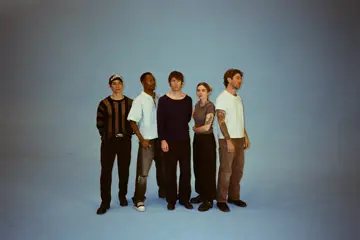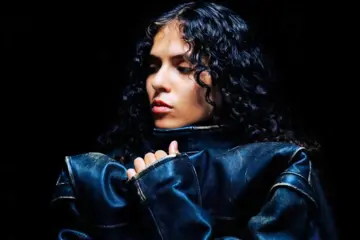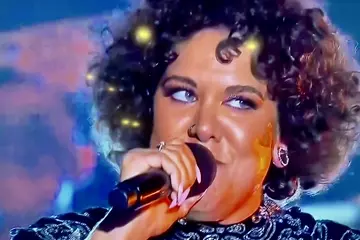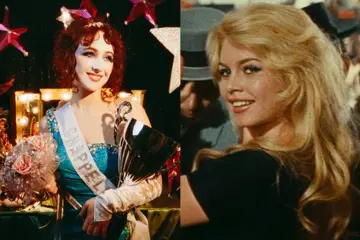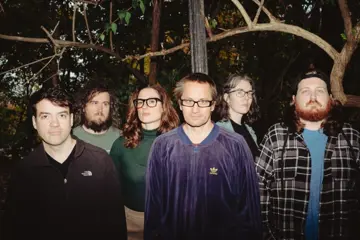A quick scan of just the albums he's released and you realise just how incredibly busy – or compulsively hyperactive – Brian Setzer has been since he first pulled together his rockabilly revival meets punk trio, The Stray Cats, back in 1979. With them there are eight studio, one live and a best of; with the Brian Setzer Orchestra, there are another eight, with seven others that are either best ofs or live albums, then as Setzer solo, there are six studio and another two live albums. And there are assorted other bits and bobs, including his contribution to the soundtrack of the feature film, La Bamba, in which he appropriately played Eddie Cochran, one of his all-time musical heroes.
“That's really the reason why I wanted to do this,” Setzer explains, on the line from his home in Minneapolis, about the evolution of Brian Setzer's Rockabilly Riot, the show he's bring to Australia. “I've got a big catalogue – that's right, a lot of songs I could play, reaching back – and I thought I'd really like to play them all and not be limited to just Stray Cats songs or just solo songs. Just play the whole thing – I even do some Big Band songs, without the horns of course – and some old Sun Session songs [from his 2005 Rockabilly Riot Vol 1: A Tribute To Sun Records]. So this seemed to solve the problem there.”
And it all began when this kid from Massapequa, in New York State, first came across the quintessential “rockabilly” guitar, the archtop semi-acoustic Gretsch.
“Yes, it really did. At first I just wanted one because it looked like Eddie Cochran's. Now, I didn't know what it would sound like and I bought it in my local paper – it was a hundred bucks – and the body was on one side of the guy's workbench and all the electronics were in a shoebox. He'd taken it apart 'cause he was gonna re-finish it, so I just took it and I put it all back together and I didn't realise just how good it was 'til I made some records with it and it always sounded great. People think of it as a rockabilly guitar but, I mean, Jack White uses a Gretsch and Pete Townsend uses a Gretsch, so I think it's whatever the musician's hands do with the thing. Don't forget those guitars were basically made for playing country and western in the fifties.”
Regardless, the guitar has become the hallmark of Setzer's sound and it's still in evidence, along with a whole bunch of other guitars, on his most recent album, Setzer Goes Instru-MENTAL!, which is surprisingly the guitarist's first foray into instrumental guitar music. As it happens, it was a surprise to Setzer too.
“It's funny, 'cause I was lookin' at some eight or nine songs that I'd written and almost finishing this first thing I started messin' around with Blue Moon In Kentucky and I went, 'God this sounds good,' playin' it, melody chords and there's some finger-pickin' and a little jazz thrown in and it just excited me. And when somethin' excites me like that, I have to jump and do somethin' else in that vein. So then I went to Be-Bop-A-Lula and thought, 'No one's done this instrumental – it sounds so good.' Then I just kept goin'. I wrote some songs, found a couple more and then I guess it dawned on me I had never made an instrumental record, you know? I've won Grammys in the category for a song [1998 for Sleepwalk and 1990 for Caravan, both with the Orchestra] but never done a whole album, but I thought, 'Let's keep goin', it sounds good'.”
Inevitably Setzer mixes it up, so there's jazz in there jostling with the rockabilly through to surf instrumental. “You know, all those tones are pleasing to my ear,” he admits. “It's really anything that's based in the blues is doable, 'cause it all comes from there – rockabilly, country, swing music, even surf music – I mean it really all comes from the blues, so that's the granddaddy. So all those things works for that all have to be straight down the middle.
“I guess I first discovered rockabilly… my dad had rockabilly records when I was a kid, but I never paid them any attention, 'cause that was uncool, to like what your dad liked, right? So one day I was in a club – Max's Kansas City – and I heard Be-Bop-A-Lula and it just came across the bar and grabbed me. I went, 'Wow, listen to this!' I'd never heard anything like it and I realised how good that music was. And it's funny 'cause it barely had ten minutes in the fifties – it was always an underground music – but I just loved it. Europe embraced it and never let it die.”
And it's Europe and the UK in particular that kickstarted Setzer's own career with The Stray Cats. This latest tour sees him hit the stage as Brian Setzer's Rockabilly Riot, sporting not one but two rhythm sections, featuring Chris D'Rozario and Johnny Hatton on double bass and Noah Levy and his old Stray Cats offsider Slim Jim Phantom on drums.
“I thought it would be really entertaining for the audience, you know, if I could start off with Johnny – who's been with me a long time – and Noah and then they go away and I bring up Slim Jim and Chris – who's from Melbourne by the way – and it's a whole different look and feel, then we end up just everybody's up. It's a lot of fun and in between it all, I've got a piano player, Kevin McKendree, a friend of mine from Franklin, Tennessee and God, is he good. He plays guitar and piano, so he comes in and out for little segments.”
Always up for a challenge, when Setzer hits town, there'll be moment when a third slap-bass player will join D'Rozario and Hatton, giving them something to think about.
“You'll see three,” Setzer laughs. “At the end. You know somethin', I started playin' in Spain, at our first show of the [Northern] summer tour and I went from awful to maybe I moved up to below average [laughs].”
Amy Taylor Files Lawsuit Against US Photographer For Alleged 'Exploitation Of Her Image'



